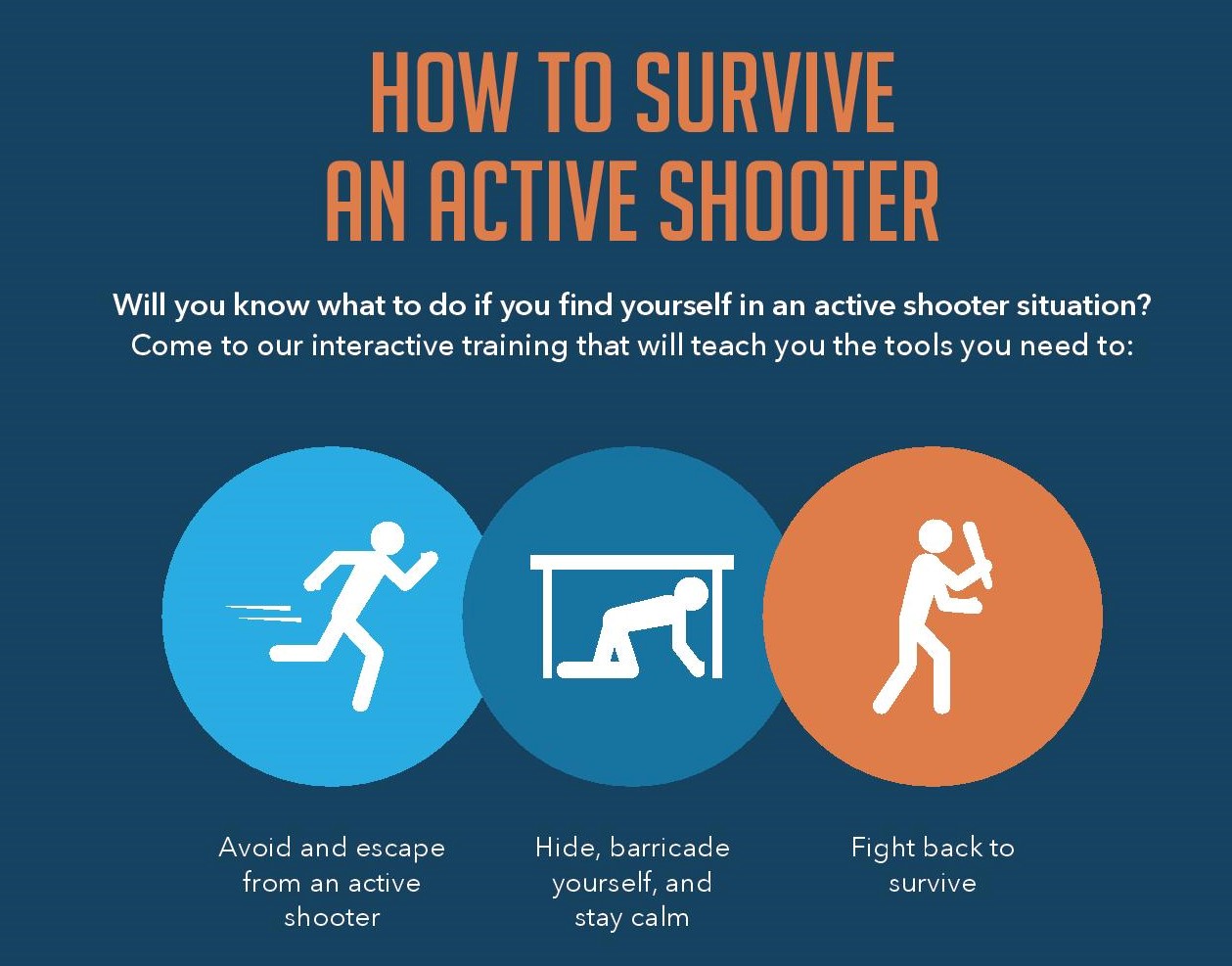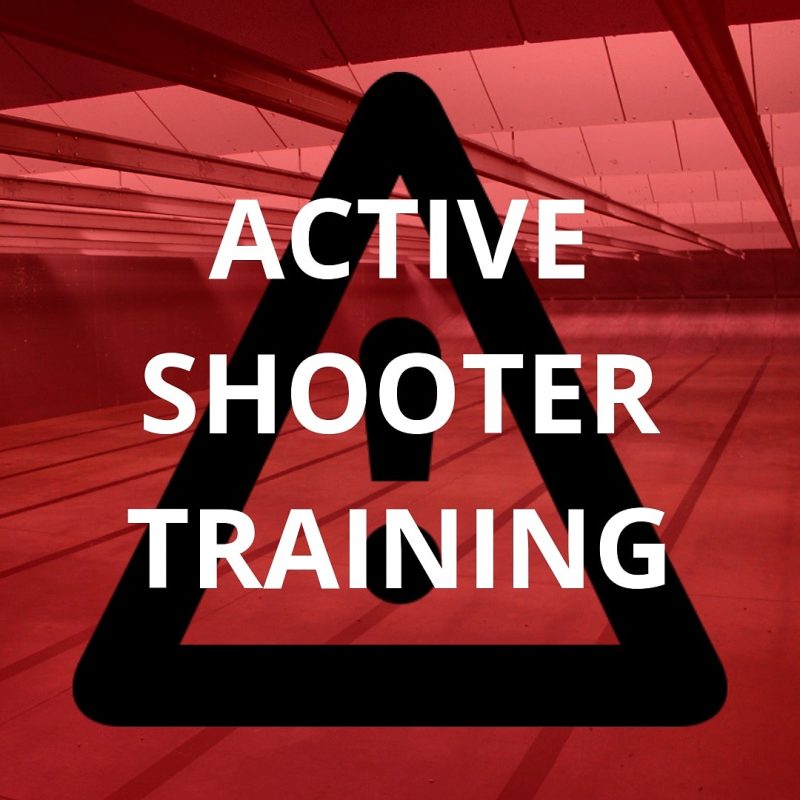The Significance of Active Shooter Training in High-Risk Environments
The Significance of Active Shooter Training in High-Risk Environments
Blog Article
The Essential Function of Active Shooter Training in Enhancing Emergency Situation Reaction Strategies in Numerous Atmospheres
Active shooter training has actually arised as a fundamental part in refining emergency reaction techniques across diverse settings, from instructional organizations to corporate environments. The efficiency of such training pivots on numerous aspects, including the particular context in which it is applied and the continuous commitment to improvement.
Significance of Active Shooter Training
In an era noted by enhancing concerns over public safety, the importance of energetic shooter training can not be overemphasized. As cases of weapon violence in public spaces continue to rise, organizations throughout numerous sectorsâEUR" instructional establishments, work environments, and public venuesâEUR" are identifying the necessity of preparing their employees and neighborhoods for such emergencies. Active shooter training equips individuals with crucial skills and understanding to react effectively in deadly scenarios, possibly reducing casualties and conserving lives.
The training not just concentrates on instant feedback activities, such as discharge and safeguarding in position, yet additionally fosters a society of understanding and preparedness. By taking part in reasonable simulations and discussions, participants can determine possible susceptabilities within their environment and develop approaches for mitigating dangers. Moreover, such training boosts interaction and control among employee and very first responders, ensuring an extra unified technique during dilemmas.

Trick Components of Effective Educating
Efficient energetic shooter training consists of a number of key parts that improve readiness and feedback abilities. First and leading, realistic scenario-based simulations are crucial. These workouts immerse individuals in high-stress scenarios that mimic prospective energetic shooter events, enabling them to practice decision-making and physical actions under stress.
Furthermore, training needs to include a comprehensive understanding of communication protocols. Participants ought to be skilled in just how to relay critical information to law enforcement and fellow people throughout an occurrence. This consists of utilizing emergency alerts and understanding the chain of command.
Another vital component is the unification of mental health awareness. Training ought to attend to the mental impact of energetic shooter situations, outfitting individuals with dealing strategies and sources to support their mental wellness post-incident.
In addition, normal correspondence course are crucial to ensure that skills remain sharp and expertise is current. This continual education and learning enhances the relevance of readiness and cultivates a society of safety within organizations.
Training for Different Settings
Energetic shooter training have to be tailored to the particular settings in which individuals operate, as each establishing presents distinct challenges and dynamics. Training in a company workplace will vary dramatically from that in a school, shopping mall, or health care facility. Each environment necessitates a customized technique that thinks about elements such as format, population thickness, and readily available retreat paths.
In educational establishments, training programs should stress lockdown treatments, interaction protocols with police, and methods for shielding trainees. Alternatively, in company settings, training might concentrate on emptying methods, acknowledging questionable actions, and making use of available resources for protection or shelter-in-place situations.
Moreover, public venues like malls or sporting occasions require comprehensive crowd management strategies, with a focus on rapid response coordination among security personnel and neighborhood police.
In medical care settings, training has to attend to specific vulnerabilities, such as the existence of clients who may click for more require prompt help. By understanding the unique features of each atmosphere, organizations can create efficient training components that enhance preparedness and improve general safety and security, making certain that individuals are equipped to respond suitably in different situation situations.

Building a Culture of Awareness
Creating a culture of awareness is essential to boosting security procedures in any kind of atmosphere, as it equips individuals to acknowledge possible risks and respond proactively. This culture necessitates constant education and learning, open communication, and the integration of safety procedures into everyday routines.
Organizations should prioritize energetic shooter training as part of their overarching safety and security technique, making certain that all personnel recognize the certain dangers related to their setting. Regular training sessions cultivate vigilance and experience with emergency situation procedures, motivating individuals to continue to be alert to unusual habits or conditions.
Moreover, promoting a culture of recognition involves developing an environment where reporting questionable activity is both urged and normalized. active shooter training. Workers should really feel comfy sharing their concerns without fear of revenge. This can be achieved via clear channels of communication and supportive management
Furthermore, participating in neighborhood collaborations additional resources can increase recognition past organizational boundaries, promoting a shared responsibility for safety. Efforts such as workshops, drills, and educational sessions can additionally improve collective caution. Eventually, developing a culture of awareness not only prepares individuals for possible crises but likewise reinforces the overall resilience of the organization against dangers.
Evaluating Educating Efficiency
While regular training sessions are essential for readiness, evaluating their efficiency is equally important to make certain that employees are equipped with the necessary skills and understanding to respond suitably in case of an active shooter scenario. Examination procedures need to consist of both qualitative and quantitative evaluations resource to measure the impact of training on reaction capacities.
Surveys and responses from participants can provide beneficial insights into the training's significance and applicability. Furthermore, conducting practical drills and simulations allows organizations to observe real-time decision-making and teamwork under stress. Analyzing the results of these exercises aids recognize staminas and areas for renovation.

Involving stakeholders, consisting of legislation enforcement and emergency responders, in the examination procedure can boost reputation and provide a comprehensive point of view on training efficacy (active shooter training). Ultimately, a systematic assessment method makes sure that active shooter training stays a vital part of a company's emergency response technique, cultivating a more secure environment for all
Final Thought
Active shooter training is crucial in fortifying emergency feedback methods across varied environments. Ultimately, the implementation and evaluation of effective training programs contribute considerably to alleviating the influence of active shooter circumstances, thus guarding lives and enhancing neighborhood strength.
Report this page